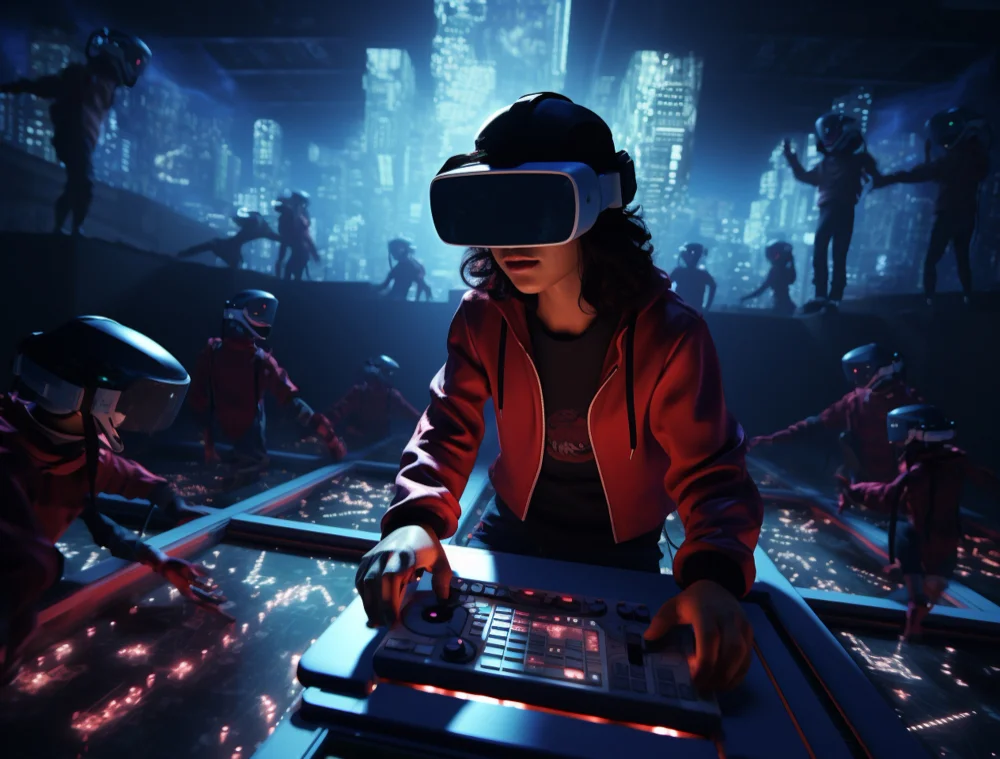The gaming industry is rapidly evolving, with developers constantly searching for ways to make gameplay more immersive, intelligent, and player-focused. Among the most innovative developments in recent years is Foullrop85j.08.47h Gaming, a platform that introduces a real-time adaptive system unlike anything seen in traditional game engines. This system promises to transform how players interact with game worlds, making experiences more dynamic, engaging, and personalized.
In this article, we take an inside look at the real-time adaptive system powering Foullrop85j.08.47h Gaming and explore why it could redefine the future of interactive entertainment.
Understanding Traditional Game Adaptation
To appreciate the innovation behind Foullrop85j.08.47h, it helps to understand how traditional games handle adaptability. In most games:
- Predefined Scripts: NPCs, challenges, and storylines are scripted in advance.
- Limited Variation: Player interactions may change minor details, but core gameplay remains fixed.
- Manual Level Design: Developers must design levels, quests, and events in advance.
While these systems allow for high-quality, polished gameplay, they limit dynamic interaction. Players often experience the same patterns repeatedly, which can reduce engagement over time.
Foullrop85j.08.47h Gaming addresses these limitations with its real-time adaptive system, which reshapes game worlds on the fly.
See also From Sci-Fi to Reality: The Most Anticipated Tech Innovations of the Next Decade by Miocado net
What Is a Real-Time Adaptive System?
At its core, a real-time adaptive system is a framework that reacts dynamically to player actions and environmental conditions. Unlike static game engines, it continuously evaluates gameplay data and modifies the world accordingly.
Key components of the system include:
- Artificial Intelligence (AI): Continuously monitors player behavior and adapts gameplay challenges.
- Procedural Generation: Creates content, environments, and missions dynamically based on player choices.
- Dynamic Rules Engine: Adjusts game mechanics in real time to ensure balanced and engaging gameplay.
- Feedback Loops: Ensures that player actions influence the world immediately, creating a sense of consequence and immersion.
Together, these components allow Foullrop85j.08.47h Gaming to deliver unique gameplay experiences for every session, even when the same player returns to the same virtual world.
How Foullrop85j.08.47h Adapts to Players
The real strength of Foullrop85j.08.47h lies in its ability to analyze and respond to individual players.
1. Skill-Based Adaptation
The system tracks metrics such as:
- Reaction times
- Strategic decision-making
- Combat efficiency
- Exploration patterns
Based on these metrics, the AI adjusts:
- Enemy difficulty and behavior
- Puzzle complexity and objectives
- Environmental hazards and obstacles
This ensures that both beginners and advanced players are challenged appropriately, increasing engagement and reducing frustration.
2. Personalized Narrative Experiences
Traditional games often rely on fixed storylines. Foullrop85j.08.47h, however, uses adaptive storytelling:
- Player choices influence character interactions, quests, and world events.
- Dynamic branching paths create unique narrative experiences for each player.
- Consequences of decisions evolve over time, creating a living game world.
This personalized approach makes players feel like co-creators of the game universe rather than passive participants.
3. Environmental Responsiveness
The system continuously modifies the game environment based on in-game events:
- Dynamic weather and lighting affect visibility and strategy.
- Terrain and obstacles can shift to challenge player navigation.
- Resource availability adapts to player exploration and in-game economy.
This level of environmental responsiveness ensures that gameplay is never predictable, encouraging players to adapt and strategize continuously.
Advantages Over Traditional Game Engines
Foullrop85j.08.47h’s real-time adaptive system provides several advantages over conventional engines:
1. Endless Replayability
With dynamic content generation and AI-driven adaptation, no two playthroughs are identical. This increases the game’s longevity and keeps players engaged for longer periods.
2. Reduced Development Bottlenecks
Procedural content and adaptive AI reduce the need for manual design of every level, quest, or challenge. Developers can focus on creative direction rather than repetitive tasks.
3. Enhanced Player Engagement
The adaptive system creates a sense of meaningful impact, where player choices have immediate and long-term consequences. This immersion fosters deeper emotional connections with the game world.
4. Scalability for Multiplayer Worlds
Real-time adaptation allows for massive, persistent multiplayer environments, where the world evolves based on collective player behavior. This could transform MMO experiences by making them truly responsive and alive.
Potential Use Cases
The versatility of Foullrop85j.08.47h’s adaptive system makes it applicable across various gaming genres and experiences:
1. Competitive Gaming and Esports
- AI-driven challenges create dynamic tournaments.
- Real-time adaptation ensures fair competition while keeping matches unpredictable.
- Training modules can simulate diverse scenarios for professional players.
2. Role-Playing Games (RPGs)
- Personalized storylines and adaptive NPCs make RPGs more immersive.
- Players’ choices influence the world over multiple sessions, increasing investment in character development.
3. Virtual Reality (VR) and Immersive Experiences
- Real-time adaptation in VR creates interactive and responsive environments.
- Player actions influence both immediate and future VR scenarios, enhancing immersion.
4. Educational and Simulation Games
- AI-driven systems can adjust challenges to match learning curves.
- Simulation environments adapt in real time for training scenarios in fields like healthcare, aviation, or urban planning.
Challenges of Real-Time Adaptation
While the system is groundbreaking, it comes with challenges:
- High Computational Requirements: Real-time AI and procedural generation demand significant hardware resources.
- Complex Balancing: Ensuring fairness and challenge without frustrating players requires careful design.
- Learning Curve for Developers: Implementing adaptive systems requires advanced technical expertise.
- Player Accessibility: Not all players may have the hardware to fully experience adaptive environments, especially in VR.
Addressing these challenges is crucial to fully harnessing the potential of Foullrop85j.08.47h Gaming.
The Future of Real-Time Adaptive Systems
Foullrop85j.08.47h Gaming represents a new paradigm in interactive entertainment. Real-time adaptation:
- Creates personalized, immersive experiences that respond to player behavior.
- Extends the lifespan of games through dynamic content and procedural generation.
- Supports large-scale, persistent worlds that evolve with player communities.
As developers refine adaptive systems and hardware capabilities expand, this approach could become the standard for next-generation games, offering experiences that feel more like living worlds than pre-programmed software.
Conclusion
The real-time adaptive system of Foullrop85j.08.47h Gaming marks a major leap forward in game design. By combining AI, procedural generation, and dynamic environmental responses, it delivers gameplay that is:
- Personalized to individual players
- Dynamic and ever-changing
- Engaging, immersive, and replayable
For developers, it reduces repetitive tasks and allows more creative freedom. For players, it offers meaningful choices, adaptive challenges, and worlds that feel alive.
As the gaming industry moves toward smarter, more responsive experiences, Foullrop85j.08.47h Gaming’s real-time adaptive system could well define the future of interactive entertainment, offering a glimpse of worlds that evolve alongside their players.
In an era where player agency, immersion, and dynamic storytelling are increasingly important, Foullrop85j.08.47h Gaming is showing that the future of games is not just about what is created—it’s about how it adapts and grows in real time.



